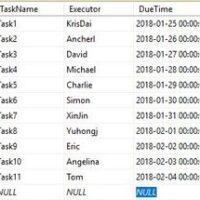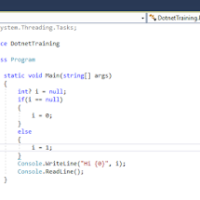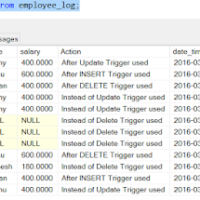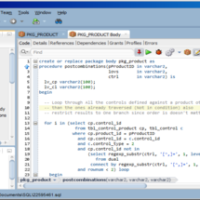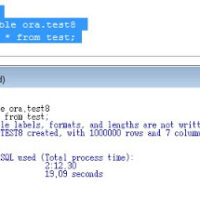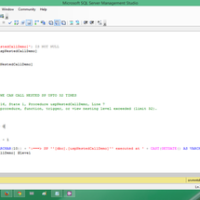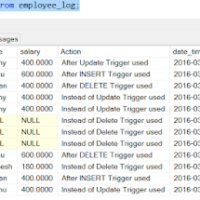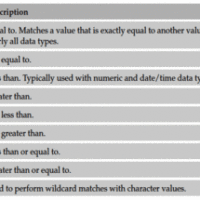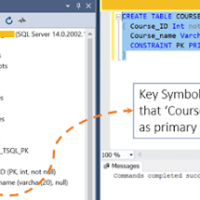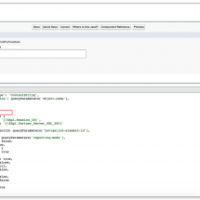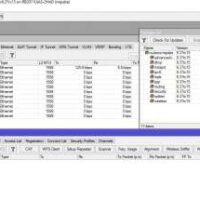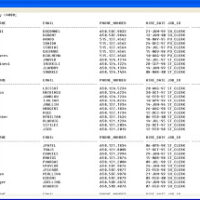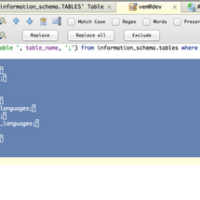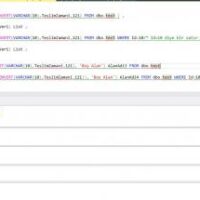Tag: TSQL
The IS NOT NULL condition is used in SQL to check a value other than NULL. It returns TRUE if a non-zero value is found, otherwise it returns FALSE. It can be used in SELECT, INSERT, UPDATE or...
The IS NULL condition is used in SQL to check the NULL value. It returns TRUE if NULL is found, otherwise it returns FALSE. It can be used in SELECT, INSERT, UPDATE or DELETE. Syntax for IS NULL...
The SQL condition NOT (sometimes called the NOT operator) is used to override the condition in the WHERE sentence of the SELECT, INSERT, UPDATE or DELETE operator. Syntax of NOT condition in...
The SQL condition IN (sometimes called the IN operator) makes it easy to check if the expression matches a value in the list of values. It is used to help reduce the need for multiple OR...
The SQL condition LIKE allows you to use wildcards to match the pattern in the query. The LIKE condition is used in the WHERE clause of the SELECT, INSERT, UPDATE or DELETE operator. Syntax for...
SQL condition OR is used to check several conditions in SELECT, INSERT, UPDATE or DELETE. Any of the conditions must be met to select a record. Syntax for SQL condition OR WHERE cond1 OR...
SQL condition AND (also known as SQL AND operator) is used to check two or more conditions in a SELECT, INSERT, UPDATE or DELETE operator. All conditions must be met to select a record. Syntax...
SQL comparison operators are used in the WHERE sentence to determine which records to select. Here is a list of comparison statements that you can use in SQL:Comparator...
SQL Indexes - The index is a method of performance tuning that allows for much faster retrieval of records. The index creates a record for each value that appears in the indexed columns. Each...
SQL Primary Keys - In SQL, the primary key is a single field or a combination of several fields that uniquely define a record. None of the fields that are part of the primary key should contain...
SQL VIEW is essentially a virtualized table that does not exist in nature. This table is created by an SQL statement that combines one or more tables. Create SQL VIEW Syntax for CREATE VIEW in...
SQL local temporary tables - unique in modules and built-in SQL programs in SQL sessions. Syntax for DECLARE LOCAL TEMPORARY TABLE in SQL DECLARE LOCAL TEMPORARY TABLE tab_name ( column_1...
SQL GLOBAL TABLES are tables that are created separately in SQL sessions. Syntax for CREATE GLOBAL TEMPORARY TABLE in SQL CREATE GLOBAL TEMPORARY TABLE tab_name ( col1 datatype_1 [ NULL | NOT...
DROP TABLE SQL statement allows you to remove a table from an SQL database. Syntax for DROP TABLE statement in SQL DROP TABLE tab_name;where:tab_name - Name of the table to delete...
HAVING SQL operator is used in combination with GROUP BY operator to limit groups of returned strings only to those whose condition is TRUE. Syntax of the HAVING operator in SQL SELECT expr1,2,...
WHERE SQL operator is used to filter results and apply conditions in SELECT, INSERT, UPDATE or DELETE. Syntax for WHERE statement in SQL WHERE conds;where:Conds - to be met for...

